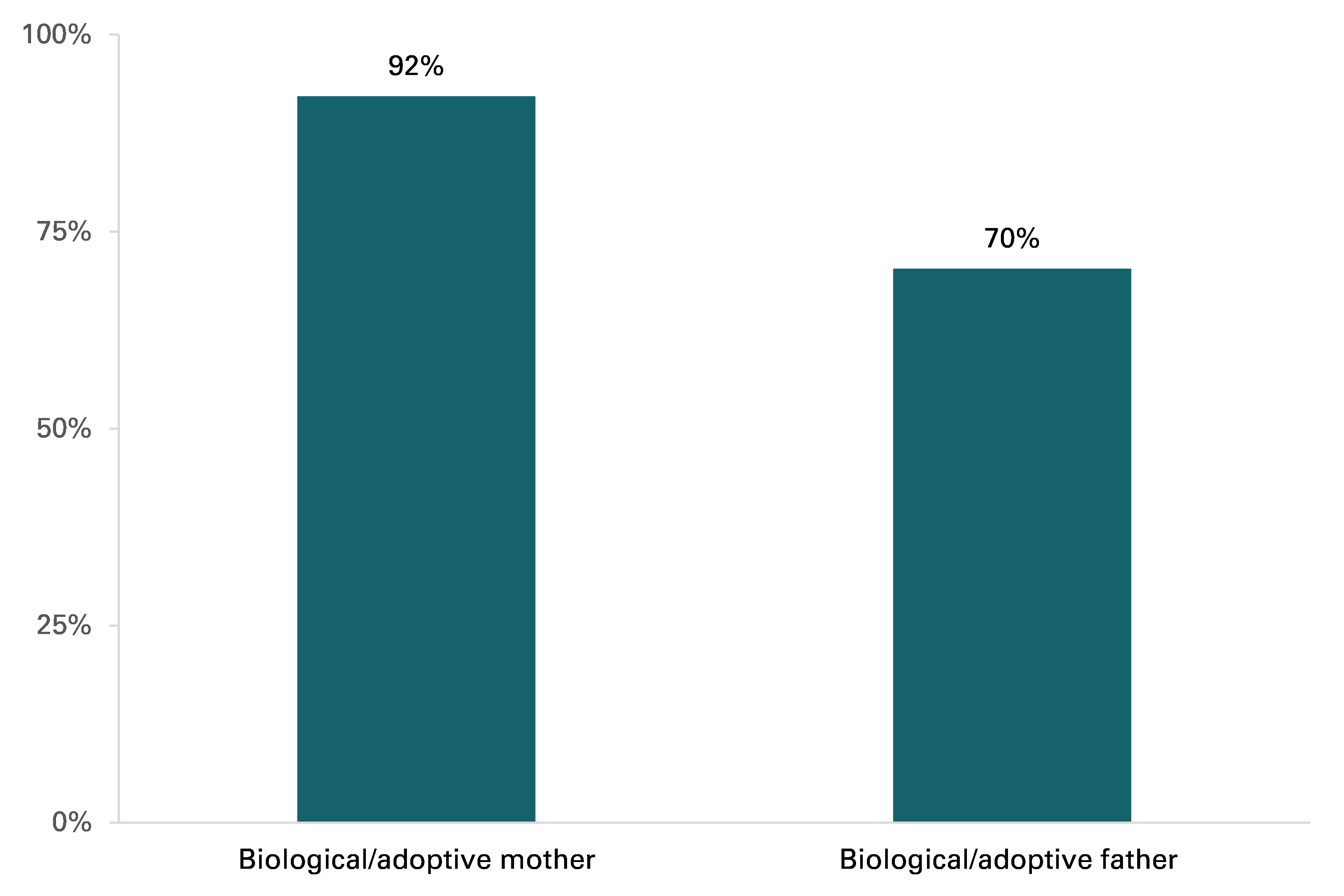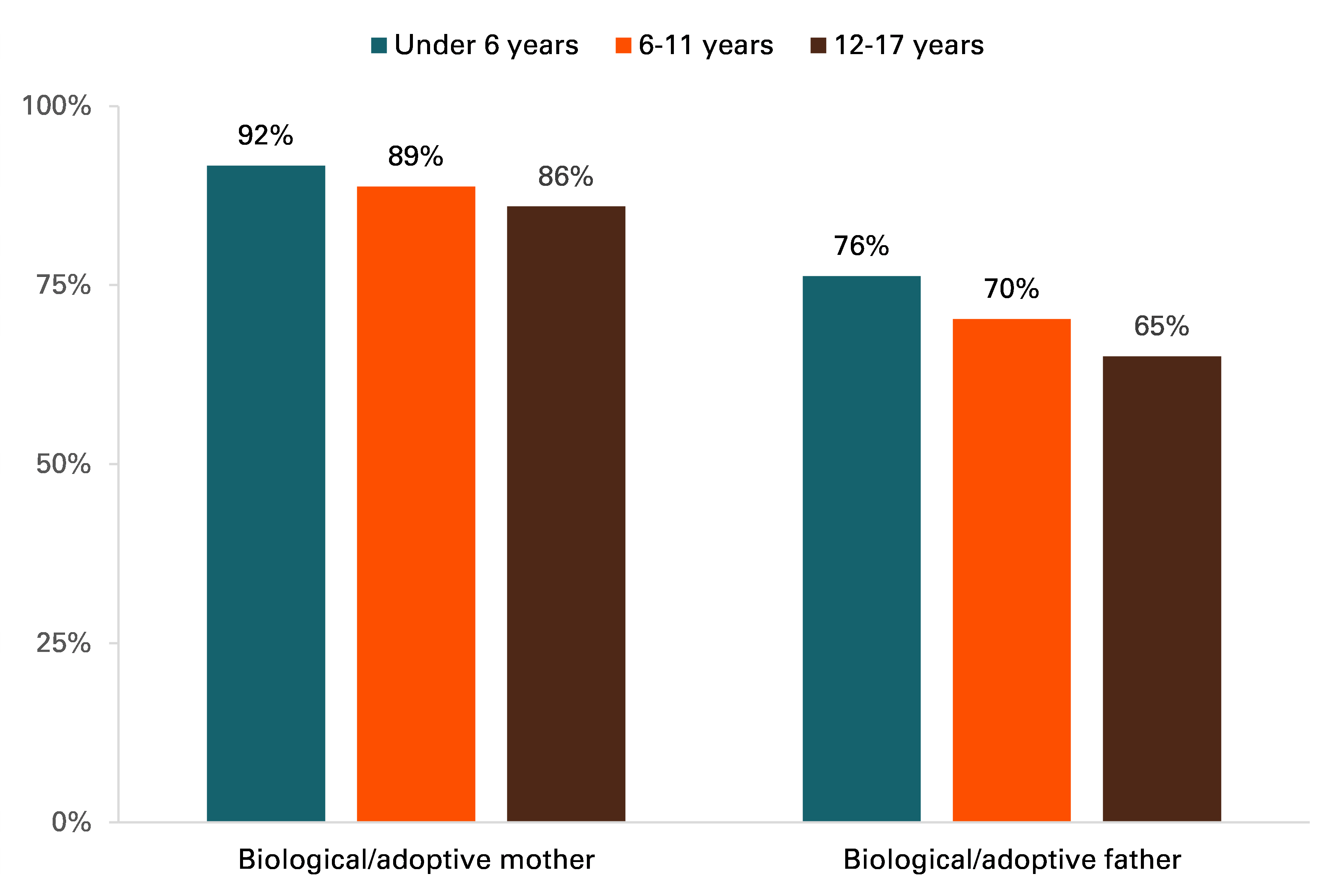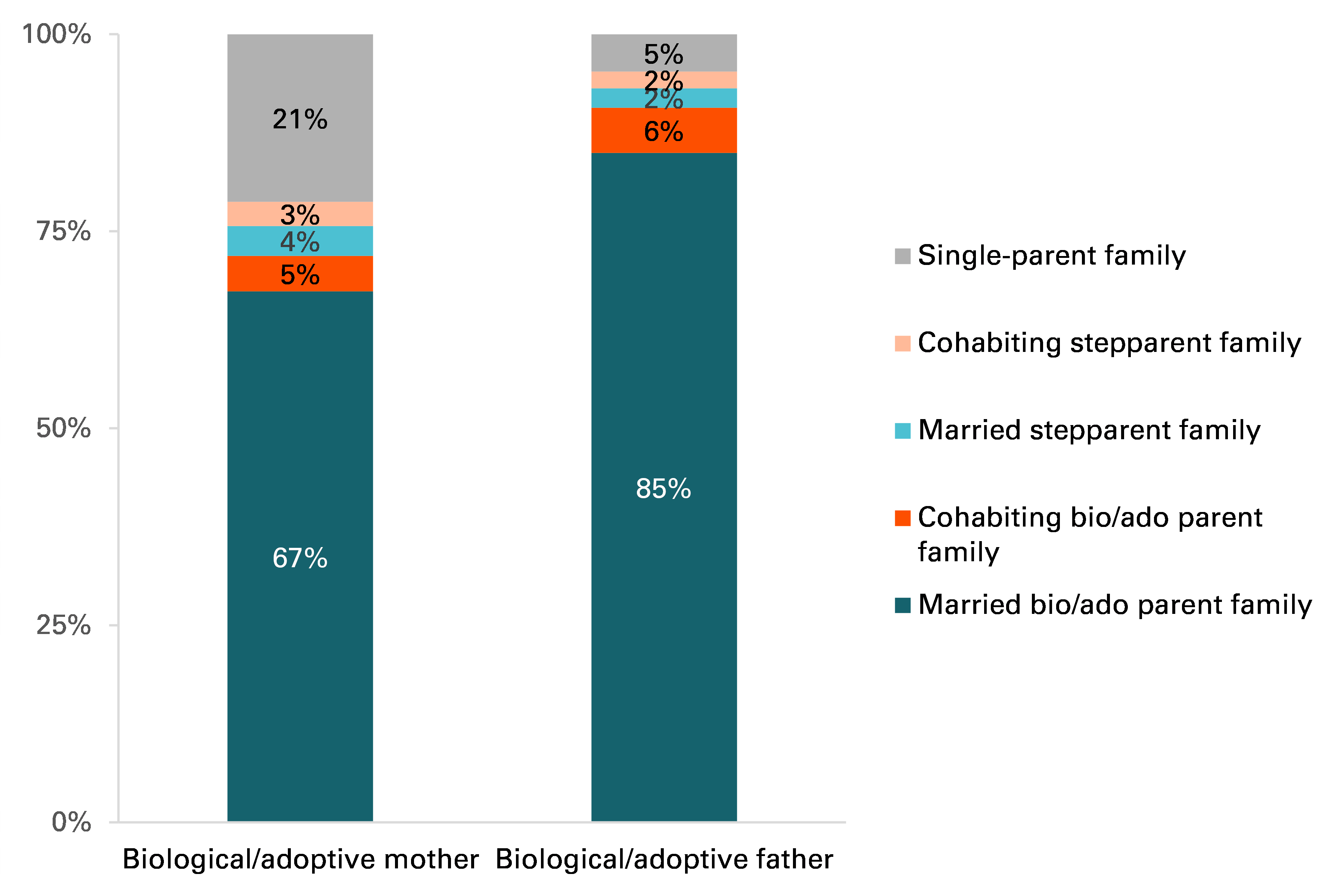Children’s Co-Residence with Mothers and Fathers, 2022
Family Profile No. 22, 2023
Author: Gabrielle Juteau
Prior family profiles on family structure have focused on children’s relationship to their parents, their parents’ union type (Eickmeyer 2017a, 2017b, 2017c; Westrick-Payne and Wiborg 2021) and sex composition (Manning and Payne 2021). However, less is known about minor children co-residing specifically with a biological/adoptive mother or father. This family profile uses the 2022 ASEC Current Population Survey from IPUMS-CPS to fill this gap. Our analyses explore minor children’s experiences living with a biological/adoptive mother (hereafter mother) and living with a biological/adoptive father (hereafter father) separately. We note that many children reside with both their mother and father. We first present the proportions of children living with their mother and with their father and then generate these estimates by children’s age groups. Then, we compare the distribution of children living with their mothers or living with their fathers according to family structure (married two biological/adopted parent, cohabiting two biological/adopted parent, married stepparent, cohabiting stepparent, single parent).
- In 2022, 92% of all minor children were living with their mother compared with 70.3% who were living with their father. In other words, more than nine children out of ten lived with their mother, in contrast to seven children out of ten who lived with their father.
Figure 1. Proportion of children living with a biological/adoptive parent by parents’ gender, 2022

Children’s Age
- In general, the proportions of children living with their mother or with their father decreased with children’s age. Among preschool age children 91.7% and among teenagers 86.0% lived with their mother. Three-quarters (76.3%) of preschool age children lived with their father and 65.1% of teenagers lived with their father.
- The difference in the share of children living with a parent declined more precipitously across childhood for those living with their father (11.2%) than their mother (5.7%).
Figure 2. Proportion of children living with a biological/adoptive parent by parent’s gender and age groups, 2022

Children’s Family Structure
- Overall, most children were living within married bio/ado parent families regardless of whether they resided with a mother or a father (or both, not shown). The proportion of children living within a bio/ado married parent family was higher among those living with their father (85.0%) than those living with their mother (67.4%).
- Bio/ado cohabiting parent families were also more prevalent for children living with their father (5.7%) than children living with their mother (4.5%).
- Slightly larger shares of children living with their mother were in a married (3.8%) or a cohabiting stepparent family (3.1%) compared with children living with their fathers (married 2.5%, cohabiting 2.1%).
- More than one-fifth of children living with their mother (21.2%) was in a single-parent family compared to about one twentieth (4.7%) of children living with their father.
Figure 3. Family Structure of Minor Children by Biological Parent’s Gender, 2022

Data Source:
Flood, S., King, M., Rodgers, R., Ruggles, S., Warren, J. R., & Westberry, M. (2021). Integrated Public Use Microdata Series: Current Population Survey: Version 9.0 [dataset]. Minneapolis, MN: IPUMS. https://doi.org/10.18128/D030.V9.0
References:
Eickmeyer, K. J. (2017a). American children's family structure: Two biological parent families. Family Profiles, FP-17-15. Bowling Green, OH: National Center for Family & Marriage Research. https://doi.org/10.25035/ncfmr/fp-17-15
Eickmeyer, K. J. (2017b). American children's family structure: Stepparent families. Family Profiles, FP-17-16. Bowling Green, OH: National Center for Family & Marriage Research. https://doi.org/10.25035/ncfmr/fp-17-16
Eickmeyer, K. J. (2017c). American children's family structure: Single-parent families. Family Profiles, FP-17-17. Bowling Green, OH: National Center for Family & Marriage Research. https://doi.org/10.25035/ncfmr/fp-17-17
Manning, W. D. & Payne, K. K. (2021). Same-sex married and cohabiting couples raising children. Family Profiles, FP-21-08. Bowling Green, OH: National Center for Family & Marriage Research. https://doi.org/10.25035/ncfmr/fp-21-08
Westrick-Payne K. K. & Wiborg, C. E. (2021). Children’s family structure, 2021. Family Profiles, FP-21-26. Bowling Green, OH: National Center for Family & Marriage Research. https://doi.org/10.25035/ncfmr/fp-21-26.
Suggested Citation:
Juteau, G. (2023). Children’s co-residence with mothers and fathers, 2022. Family Profiles, FP-23-22. National Center for Family & Marriage Research. https://doi.org/10.25035/ncfmr/fp-23-22
Updated: 11/07/2025 04:34PM


